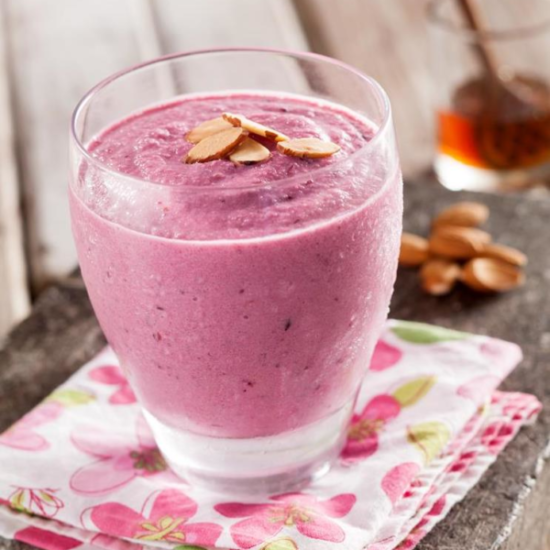
If we asked you to name a snack that provides protein, calcium and probiotics while remaining relatively low in sugar, what comes to mind first? If you thought of Greek yogurt, then we are cruising on the same brainwave (welcome!). You have probably guessed by now the topic of this blog post, so join us as we take a peek at the benefits of Greek yogurt, its role in the popular Mediterranean diet, why honey and Greek yogurt play so well together, and – of course – some of our favorite honey + Greek yogurt recipes!
There is no denying that Greek yogurt has grown in popularity over the years – in fact, according to Statista.com, Greek yogurt accounts for more than half of the U.S. yogurt market1. So, what makes Greek yogurt so different from the yogurt of your youth? Well, this version is also referred to as “strained yogurt” due to the process of straining out the liquid whey from the fermented milk. Not to get too technical, but within this whey is the naturally occurring sugar lactose, which is why Greek yogurt is lower in sugar, thicker, and tangier than traditional yogurt2. But more than flavor and texture, the removal of this sugar also boosts Greek yogurt’s protein content to 15 grams per ½-cup serving compared to regular yogurt’s 6 grams. In addition to protein, Greek yogurt also provides probiotics and various other essential vitamins and minerals such as calcium, potassium, and vitamins A and B-123.
But what does all this mean to your body? Well, due to its high protein, calcium and probiotics, Greek yogurt has a slew of potential health benefits, including, but not limited to:
- Improving bone health
- Calcium & protein
- Building muscle mass
- Protein
- Reduced appetite and hunger
- Protein-rich = feel fuller longer
- Improving gut health
- Probiotics2
While the name suggests that this worldly treat hails from the lands of the Mediterranean Diet, dairy is typically enjoyed in moderate portions within the popular eating pattern, according to the Mayo Clinic4. That said, it still serves as an additional source of protein that can be enjoyed in all dayparts whether that be in a smoothie, dip, marinade, or soup.
Sounds like Greek yogurt is pretty impressive on its own, right? Well, like so many other ingredients, it only gets better with honey! In fact, the most common prebiotics are nondigestible oligosaccharides and honey contains a variety of these compounds, which may function as prebiotics. Research conducted at Michigan State University has shown that adding honey to fermented dairy products, such as yogurt, can enhance the growth, activity and viability of Bifidobacteria, a group of “good bacteria” thought to be important to maintaining optimal health of the gastrointestinal (GI) tract5.
So how do we work more Greek yogurt into our diets? According to USDA’s MyPlate, most people need 3 cups of calcium-rich dairy foods daily6. But Greek yogurt’s tangy taste doesn’t appeal to everyone. That’s where honey comes in— a little drizzle provides a touch of sweetness that can make it more palatable. Check out the recipes below to see how simple and delicious honey + Greek yogurt can be!
Do YOU have a favorite way to enjoy Greek yogurt? Does it have honey? Tell us about it in the comments below.
SOURCES:
1 Topic: U.S. Greek yogurt market. (2022, August 23). Statista. https://www.statista.com/topics/2351/greek-yogurt/#topicOverview
2 Burgess, L. (2023, March 30). Is Greek Yogurt Good for You? https://www.medicalnewstoday.com/articles/323169
3 FoodData Central. (n.d.). https://fdc.nal.usda.gov/fdc-app.html#/food-details/170903/nutrients
4 Mediterranean Diet for Heart Health. (2023, July 15). Mayo Clinic. https://www.mayoclinic.org/healthy-lifestyle/nutrition-and-healthy-eating/in-depth/mediterranean-diet/art-20047801
5 Chick H, Shin HS Ustunol Z. Growth and acid production by lactic acid bacteria and bifidobacteria grown in skim milk containing honey. J Food Sci. 2001; 66(3):478-481.
6 Choose MyPlate. USDA's MyPlate - Home Page, United States Department of Agriculture, www.choosemyplate.gov






